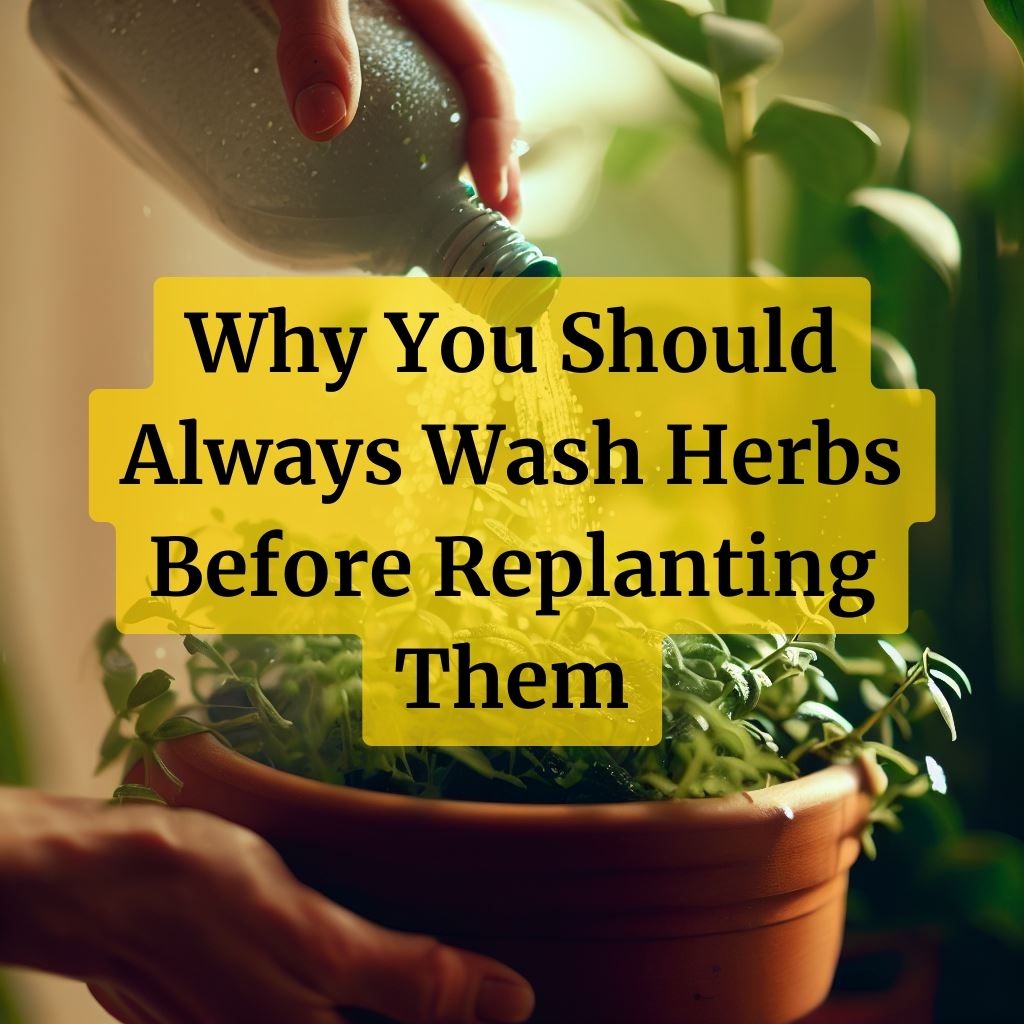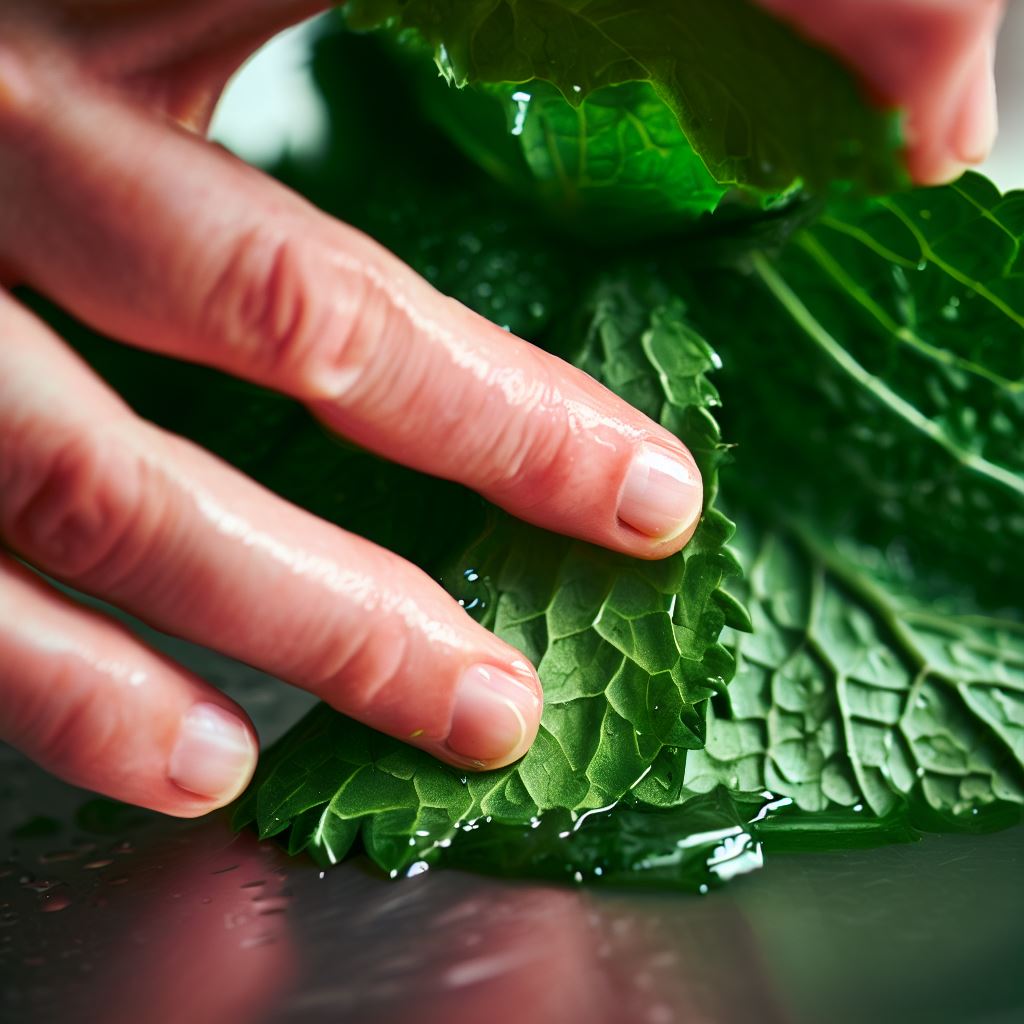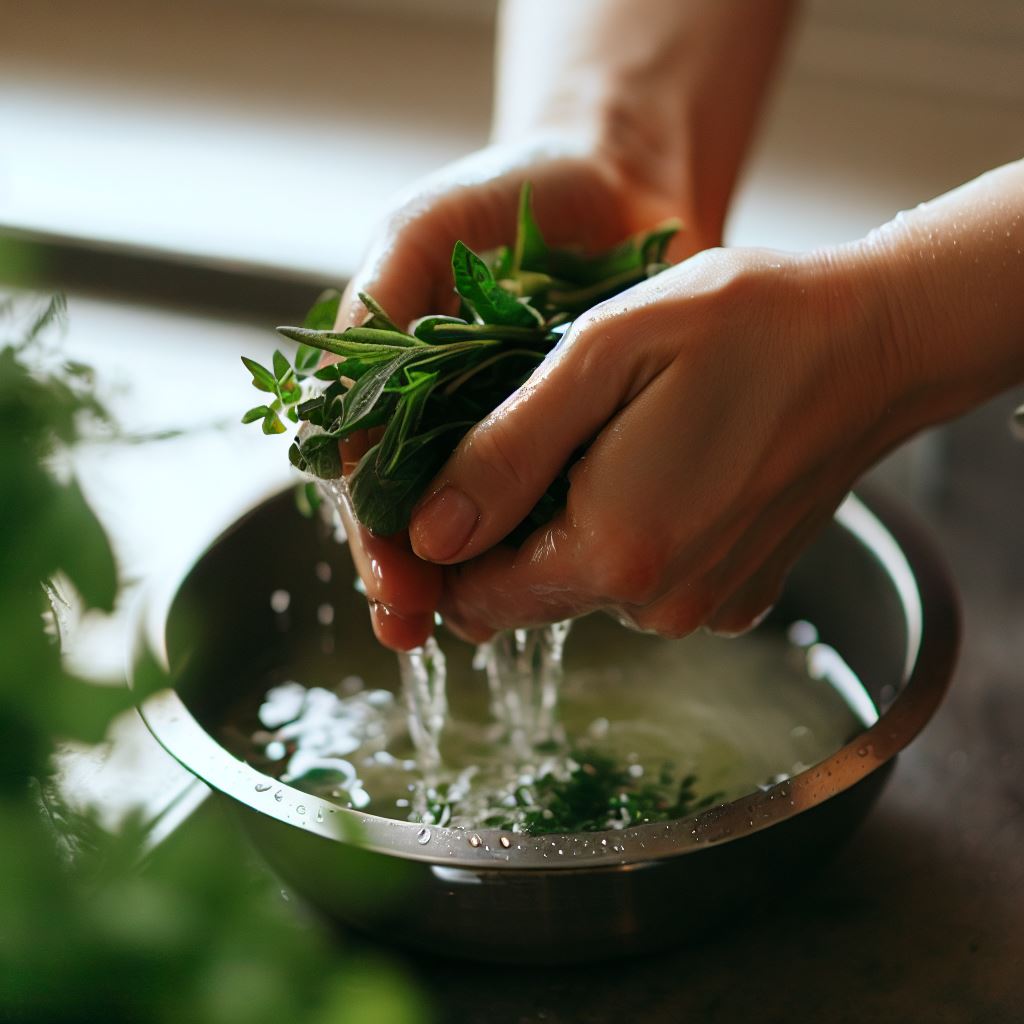
Do you need to wash store bought herbs before planting them in your indoor herb garden? Yes. You should always wash herbs before you replant them in your herb garden.
Washing storebought herbs before replanting them in your indoor garden is an important step to ensure the health and safety of the plants you’re growing and the food you prepare with them. This is why:
In this article
Inspection and Pest Control
- Before you start washing your indoor herb plants, it’s essential to inspect them closely for signs of insect pests. Common pests that may infest indoor herbs include aphids, mealybugs, spider mites, and whiteflies.
- Look for tiny insects, discolored leaves, webs, or sticky residue on the leaves. These are typical indicators of pest infestations.
- If you detect any pests, it’s important to address the issue promptly. You can use methods such as gently removing the pests with a soft brush or spraying the plant with an organic insecticidal soap following the product’s instructions.
Preparing to Wash
- Once you’ve ensured that your indoor herbs are free from visible pests, it’s time to wash them.
- Choose a suitable location for this task, preferably near a sink or a workspace with easy access to water.
Proper Washing Technique

- Fill a bowl or basin with lukewarm water. The water should be at a temperature that’s comfortable to touch but not too hot to damage the herb plants.
- To wash the herbs without bruising the leaves, hold the plant gently but firmly by the base of the stem with one hand. Ensure that your fingers are over the soil to prevent it from being disturbed or washed away.
- Dip the herb plant into the lukewarm water, gently swishing it around. Be cautious not to submerge the entire plant, focusing mainly on the leaves.
- Use your free hand to carefully rinse and wipe the leaves. This helps remove any residual dirt, dust, or potential remnants of pests.
- Inspect each leaf as you wash it, paying special attention to the undersides, where pests often hide.
- If any stubborn dirt or pests remain, you can use a soft-bristle brush or a gentle spray of water to dislodge them.
Drying Before Replanting
- After washing, gently shake the herb plant to remove excess water. You can also pat it dry with a clean paper towel or allow it to air dry.
- Ensure that the plant is completely dry before returning it to its original pot or herb garden. Damp conditions can promote mold and mildew growth.
Regular Maintenance
Washing your indoor herbs should be part of your regular maintenance routine. Even if you don’t see any pests initially, it’s a good practice to periodically check and clean your herb plants to prevent infestations from taking hold.
By following these steps, you can maintain the health and vitality of your indoor herb garden while ensuring that the herbs you harvest are clean and safe to use in your culinary endeavors.
Wash Your Herbs Before Eating or Cooking

It is important to wash your herbs before eating or cooking with them to avoid potential exposure to harmful bacteria like salmonella and E. coli. The FDA conducted a series of tests in October 2017 to explore the bacterial contamination of fresh herbs. The tests included samples from both imported and domestic suppliers of herbs, and the results showed that out of the 104 imported herbs tested, 3 tested positive for shiga toxin-producing E. coli, and 4 tested positive for salmonella. None of the 35 domestic herbs tested positive for bacterial contamination.
Herbs like basil, cilantro, and parsley are typically served fresh, and since they are eaten raw, any contact they may have had with bacteria in soil or water could make you sick. Cooking potential carriers of bad bacteria is known as a “kill step,” but this is not possible with herbs that are typically eaten raw.
To avoid getting sick from your herbs, it is important to wash them properly. Washing herbs can help remove dirt, dust, and other contaminants that may be present on the leaves. To wash herbs, fill a bowl with cold water and remove the leaves from the stems. Float the leaves in the cold water while making a gentle circular vortex stirring action. Stir gently for 20 seconds, then transfer the delicate leaves to a section of paper towel to dry. By following these steps, you can ensure that your herbs are safe to eat and free from harmful bacteria.
Summary
Washing your herbs before replanting them is a simple but effective way to ensure their health and growth. By removing any dirt, pests, or diseases from the roots and leaves, you can prevent infections and infestations that could harm your plants or contaminate your soil. You can also improve the drainage and aeration of your soil by loosening the root ball and removing any excess soil. Washing your herbs also gives you a chance to inspect them for any signs of damage or stress, and to trim any dead or diseased parts. By following these steps, you can prepare your herbs for a smooth and successful transition to their new home. Whether you are growing herbs indoors or outdoors, washing them before replanting them will help you enjoy fresh and flavorful herbs all year round.







